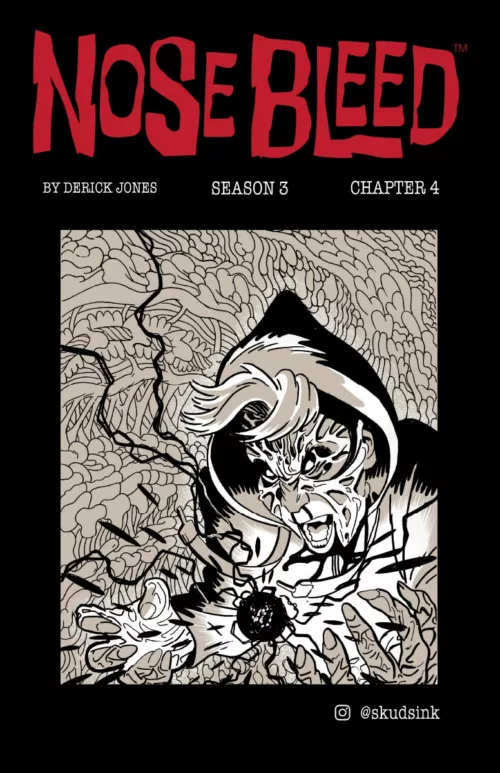“We don’t get answers if we use the ones we already have.”
—Tobias Rehberger
Four and a half years ago, German artist Tobias Rehberger took a leisurely walk from the Fondation Beyeler in Basel, Switzerland, to the Vitra Campus in Weil am Rhein, Germany, stopping where the landscape enticed him. At the pauses, he allowed a sensation or activity to suggest itself to his ample imagination. Then, he set about inventing 24 art objects to enhance the natural experiences he had imagined, designed them, and envisioned how each should be positioned in its spot.
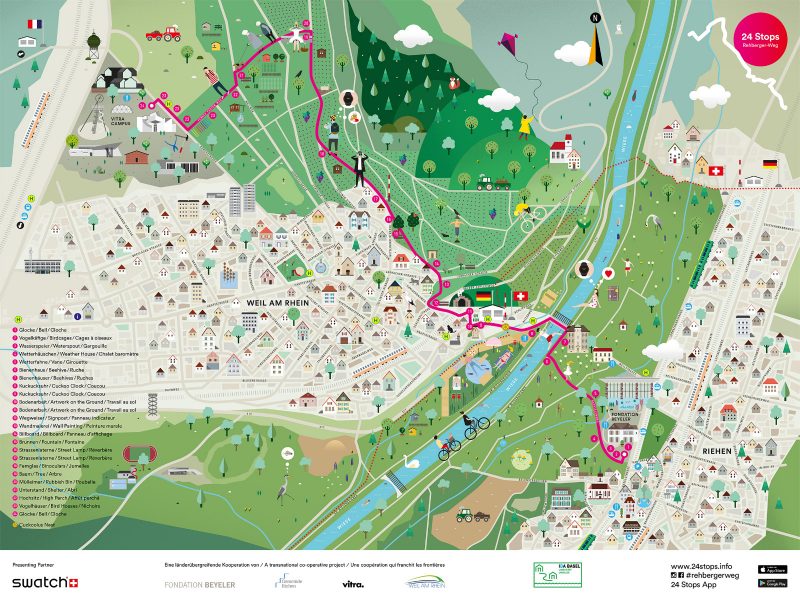
The resulting 24 Stops: Rehberger-Weg is an art trail along the 5-kilometer path between Beyeler and Vitra. The two institutions initiated the project to strengthen the connection between them; Swiss watch-making company Swatch paid to produce and fund it for ten years; and Rehberger created it.
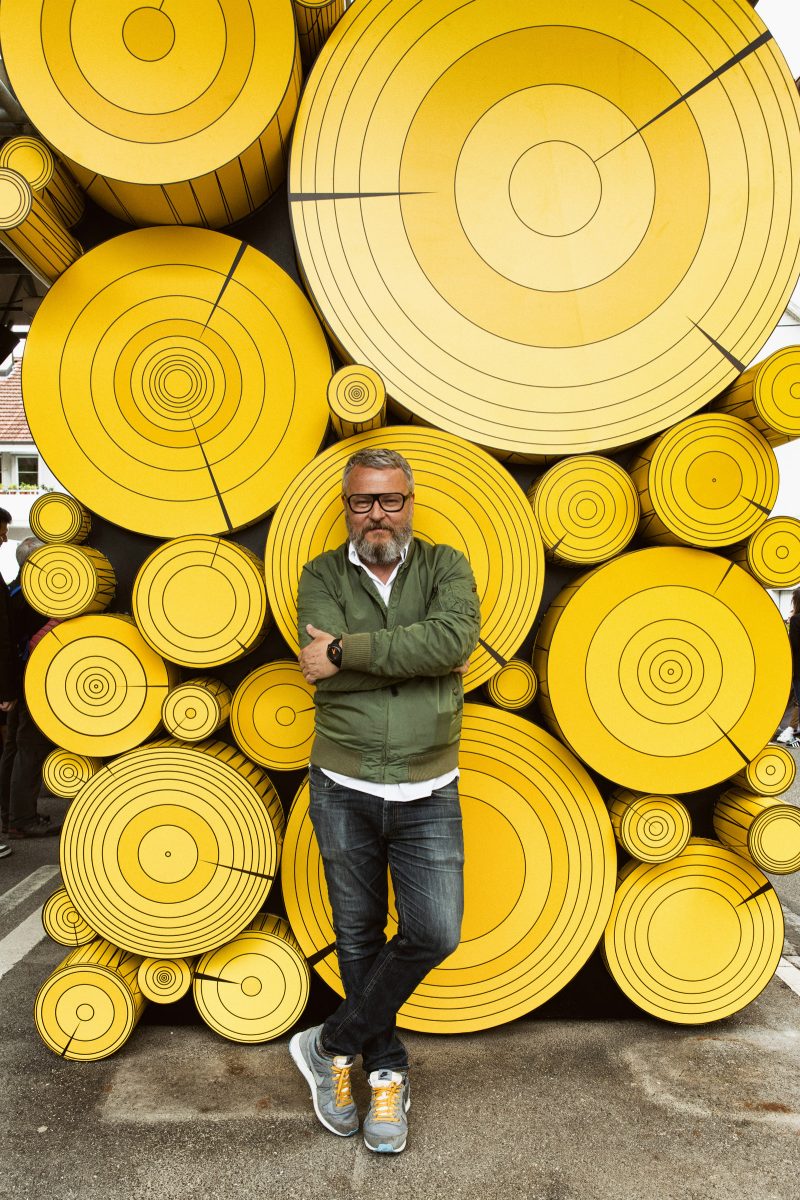
Way-markers
On June 16, 2016, Rehberger launched the second phase of his 24 Stops: Rehberger-Weg, jump-starting Art Basel 2016 with a good-natured and lively pre-opening party.
Tobias also took upon himself the responsibility of making his art objection “way-markers” accepted by their neighbors in the landscape. He met with residents of the nearby communities, listened, and allowed them time to digest the presence of his goofy inventions in their neighborhoods. Three years into the project and after the first 12 way-markers had been installed, Tobias and his collaborators and Weg’s neighbors celebrated. Tobias named the occasion his art trail’s first stage launch.
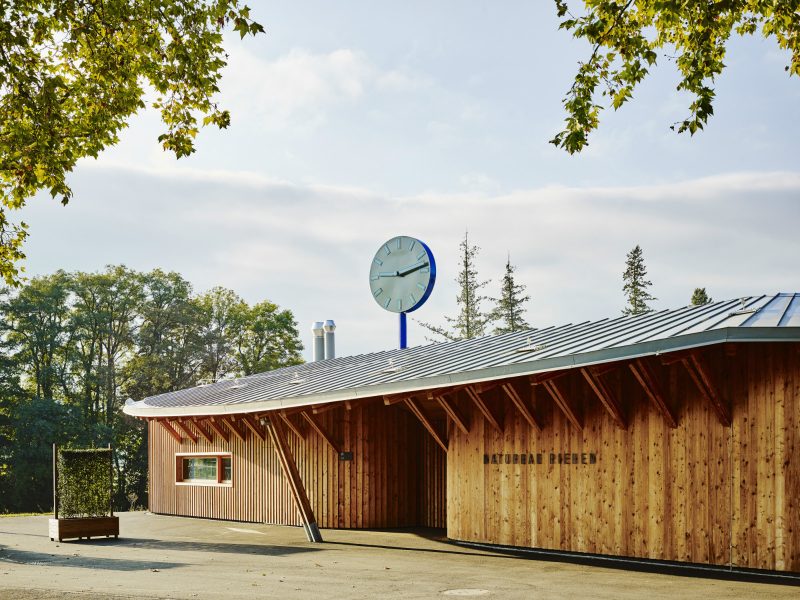
In the art pieces Rehberger positioned along his way**, Tobias merged technology and nature to confuse expectations, a trademark Tobias talent. He made cuckoo clocks that act like and imitate the sounds of birds, but look nothing like them, and unlike the quaint cuckoo time-tellers of yore, possess no handmade aura or furniture feel.
Since the quintessential Swiss cuckoo clock originated in the Black Forest region, it is not surprising that some old-timers of the region–both Swiss and German–looked askance at the Rehberger cuckoo clocks. But Tobias’s sunny disposition and sincerity shined over their cynicism. Doubters opened their eyes for a second, a more objective and distant look, and accepted the cuckoos.
Rehberger’s standout tree had an even harder time fitting in. Its goofy brashness seemed to show a lack of respect for the Black Forest, the region that dominates the geographic and cultural identity, as well as the cultural heritage of long-time residents. In a sense, Rehberger’s over-sized designer shrub encroached on their personal space. Tobias listened with compassion, addressed their concerns, and explained his perspective. His art object’s dramatic difference from the landscape is purposeful. The over-the-top imitation shrub is meant to function as a flashing warning traffic signal, guiding travelers who are lost in thought. The shrub also marks a stopping point conducive to a pleasant pause.

Art in transit
Some of the art objects along Rehberger Weg look like abstract sculptures but are functional, while others suggest figures but have no function–a reminder to discard your preconceived notions during the walk. What you see in the markers determines what you experience. Each depends on how you look at it; Close up or from a distance, while you are passing or if you are standing still–your “view” depends on your life experiences and your present mood.
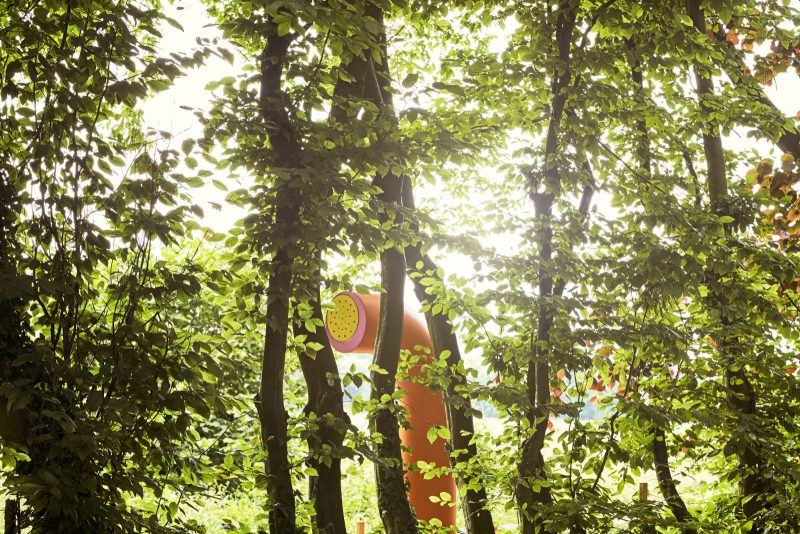
In Basel, Tobias explained how his visceral responses to life and art drive his peculiar art making. He recalled his childhood desire to possess a Van Gogh painting and use it as a pillow to rest his head, and how forty years later, the coolness of a Richard Serra sculpture he sat on refreshed him on a blistering day and indelibly enhanced his experience of Serra’s monumental art.
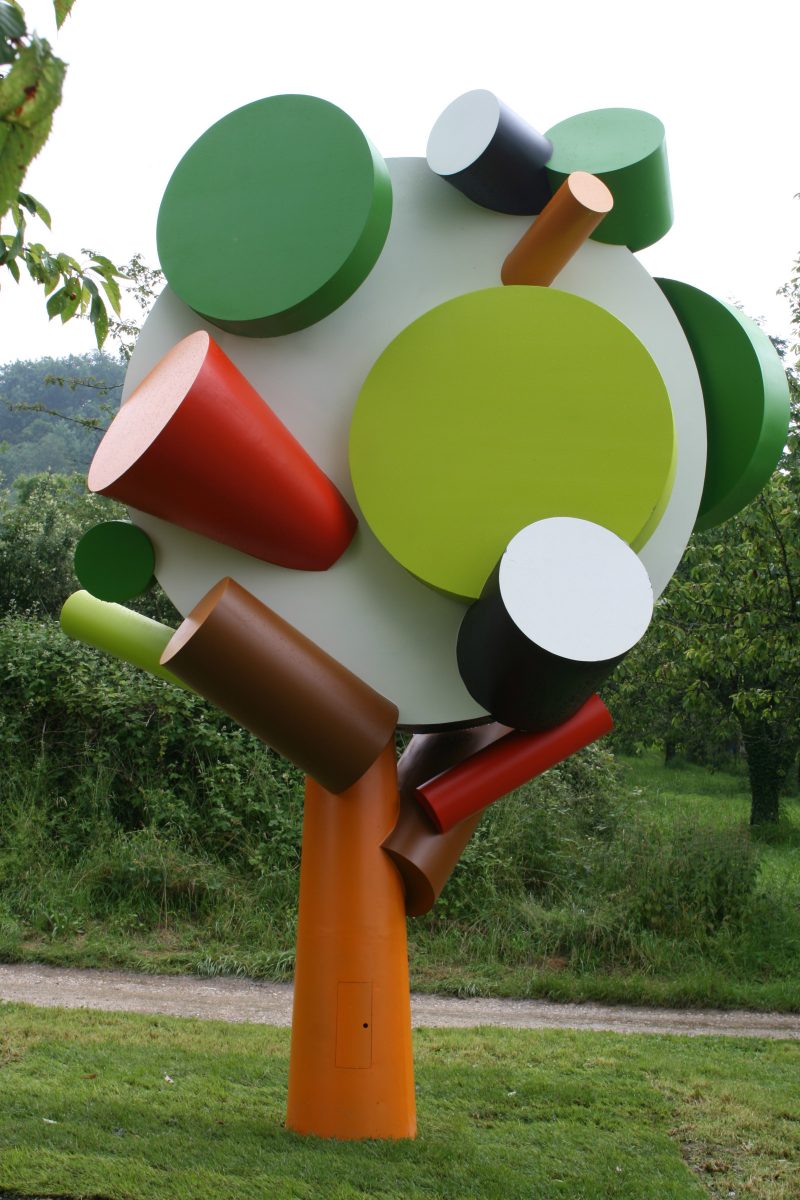
The “way markers” come, as one would expect, from Tobias’s visceral responses to his walk along the path and are designed to tickle your ears, nose, and skin, as well as your brain. You experience more than you see, depending on the weather and how open you are that day.
The hodgepodge of art objects positioned among the natural specimens growing in the landscape around the 5-kilometer walk is a giant, spread out wunderkammer (curiosity box).
European borders
After 24 Objects: Rehberger Weg was well underway, Tobias made a 25th “in-between object”–an artificial stack of long logs. It is, Tobias says, the only object that is symbolic. Tobias positioned the logs at the point on the path where Switzerland and Germany meet, laying the stack perpendicular to their common border, not horizontally like a blockade. So positioned, it becomes a gate permanently open to let everybody in. The evening of the Art Basel launch, Swiss authorities mirrored the 25th marker welcome and suspended border control at the Swiss/German border, and guests moved seamlessly across the EU boundary line, regardless of where they are from, and oblivious to Brexit.
My personal barometer registers the 25th way marker as a Rehberger’s response to the seismic change in the atmosphere from the time the project began. Who could have predicted that millions of people would flood Europe’s shores seeking refuge from the horrors of their homelands, and that borders would assume a new meaning for each of us? Rehberger says he did not.
My eyes see the 25th object as a peculiarly Rehberger way of looking back to the beginning to mark the present at its mid-way point. Moreover, as art can do, it predicted that the saga of borders would continue.
Disclaimer: Mine are not views endorsed by the artist.
** Weg in German is translated as “way” in English, affording Rehberger an irresistible punning opportunity to describe his artistic proces–transforming a public path into an art work created in the Rehberger way by integrating the philosophical queries that Rehberger investigates.






